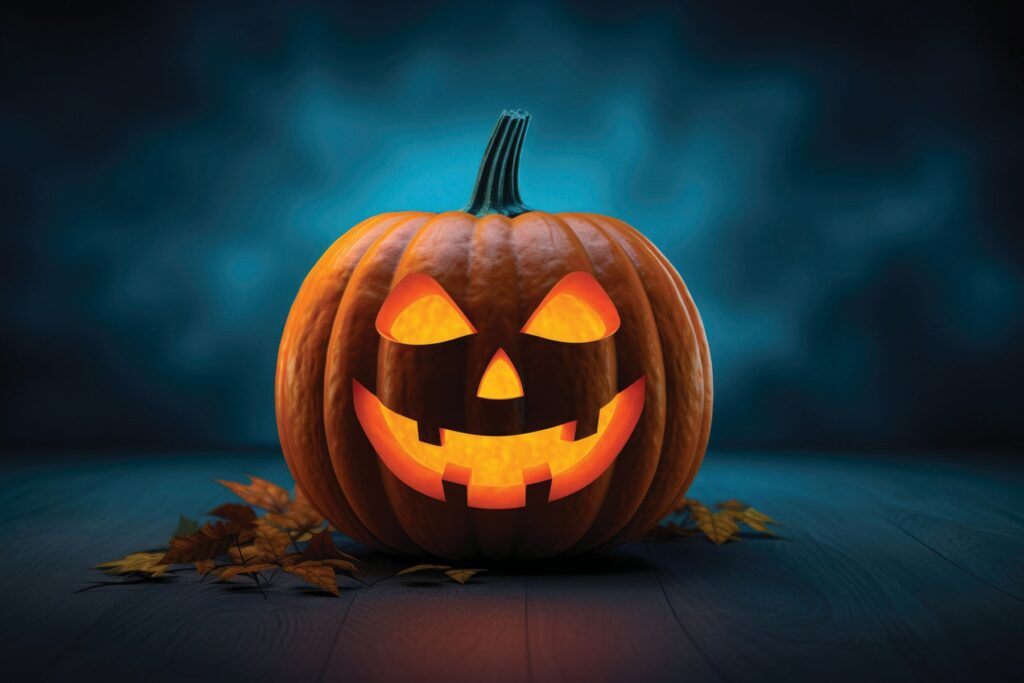Each year, as the air grows crisp and leaves turn vibrant hues of orange and red, pumpkins of all shapes and sizes begin to appear on doorsteps across the United States, their hollowed-out interiors illuminated by flickering candles. Pumpkin carving is now an essential part of the Halloween season, enjoyed by families and communities as a creative and fun way to celebrate. But how did this simple gourd, once used primarily for food, become such an integral part of Halloween festivities?
The story of pumpkin carving and its connection to Halloween is a rich tapestry woven from folklore, cultural tradition, and the passage of time. From its origins in ancient Ireland to its evolution into a popular American pastime, this critical exploration will examine the roots of pumpkin carving, its symbolic significance, and how it has become the iconic Halloween tradition we know today.
The Celtic Origins: The Festival of Samhain and the Birth of the Jack-o’-Lantern
The origins of pumpkin carving can be traced back thousands of years to the ancient Celtic festival of Samhain, which was celebrated on October 31st to mark the end of the harvest season and the beginning of winter. For the Celts, this time of year symbolized the thinning of the veil between the worlds of the living and the dead, allowing spirits to roam the earth. To protect themselves from malevolent spirits, people would light large bonfires and carve faces into turnips, potatoes, or other root vegetables, which were abundant in the region.
These carved vegetables were originally used as lanterns, placed outside homes or carried during processions to ward off evil spirits and guide friendly souls on their journey. The term “jack-o’-lantern” was born out of this practice, with the name “jack” referring to a common folk figure associated with mischief. The flickering light inside these carved lanterns served as a spiritual beacon and symbol of protection during this time of heightened supernatural activity.
One of the most enduring legends that further solidified the association between carved lanterns and Halloween is the Irish folktale of Stingy Jack. According to the story, Jack was a miserly man who tricked the devil on several occasions, leading to his rejection from both heaven and hell after he died. Condemned to roam the earth in darkness, Jack carved a lantern out of a turnip and placed a burning coal inside to light his way. This lantern, carried by the wandering spirit of Stingy Jack, became known as a “jack-o’-lantern.”
The Journey to America: How Pumpkins Replaced Turnips
While the tradition of carving vegetables began in Ireland and other parts of Europe, it was not until the practice crossed the Atlantic with Irish immigrants in the 19th century that pumpkins became the preferred medium for jack-o’-lanterns. In Ireland and Scotland, turnips and potatoes were readily available and easy to carve, but in the United States, these small vegetables were replaced by the much larger and more abundant pumpkin, which was native to North America.
Pumpkins, which had long been cultivated by Indigenous peoples in the Americas for their seeds, flesh, and versatility as a food source, proved to be an ideal substitute for turnips. Their larger size made them easier to carve, and their hollow interiors allowed for better placement of candles or other light sources, turning them into the perfect vessel for jack-o’-lanterns. By the late 1800s, pumpkins had become firmly associated with Halloween in America, and the tradition of carving faces into them began to spread across the country.
Halloween in America: The Rise of Pumpkin Carving as a Popular Tradition
Halloween as we know it today began to take shape in the late 19th and early 20th centuries, particularly as communities in the United States embraced the holiday as a night for revelry, costume parties, and games. While Halloween’s origins were deeply rooted in Celtic customs and the belief in spirits, the American version of the holiday began to shift toward a more lighthearted, secular celebration focused on community gatherings and fun.
It was during this period that pumpkin carving emerged as a central activity of Halloween. As Irish immigrants settled across the United States, they brought with them their customs and beliefs, including the use of jack-o’-lanterns to ward off spirits. American households, particularly in rural areas where pumpkins were plentiful, embraced the tradition and began carving their own jack-o’-lanterns to celebrate Halloween.
By the early 1900s, Halloween had become a widely recognized holiday in the United States, and pumpkin carving was an integral part of it. Communities organized pumpkin carving contests, and children eagerly participated in the creation of jack-o’-lanterns as a fun and creative way to engage with the holiday’s spooky themes. Magazines and newspapers began publishing tips and designs for carving pumpkins, helping to popularize the activity even further.
As Halloween continued to evolve, so too did the designs of jack-o’-lanterns. While the earliest jack-o’-lanterns featured simple, rudimentary faces meant to scare away spirits, pumpkin carving gradually became a more artistic endeavor. Carvers began experimenting with intricate designs, using different tools and techniques to create jack-o’-lanterns that ranged from whimsical to terrifying. This creativity has only grown over time, with pumpkin carving evolving into an art form in its own right.
From Family Fun to Artful Expression
Today, pumpkin carving is a beloved Halloween tradition that extends beyond its origins as a spiritual practice or folk custom. It has become a creative outlet for people of all ages, with many families making it an annual ritual to carve pumpkins together in the weeks leading up to Halloween. For many, the experience of picking out a pumpkin, scooping out its insides, and designing a face or pattern is one of the highlights of the Halloween season.
In the modern era, pumpkin carving has also gained a new level of sophistication. Professional carvers and artists have taken the practice to extraordinary heights, creating intricate, detailed, and often breathtaking designs. Competitions like Food Network’s *Halloween Wars* and annual pumpkin festivals around the country showcase the incredible skill and imagination of today’s pumpkin carvers, proving that jack-o’-lanterns can be as much about artistic expression as they are about Halloween fun.
With the rise of social media, pumpkin carving has taken on even more significance as a creative outlet. Platforms like Instagram and Pinterest are flooded with photos of elaborate jack-o’-lanterns, from traditional faces to more complex designs featuring popular characters, landscapes, or intricate patterns. Carving kits and tools are now readily available, offering people the ability to craft increasingly complex and detailed pumpkins.
The commercial aspect of pumpkin carving has also grown, with retailers offering everything from pumpkin stencils to specialized carving kits and accessories. Seasonal pumpkin patches, where families can pick out the perfect pumpkin for carving, have become a staple of fall activities, and businesses large and small capitalize on the popularity of pumpkin carving by organizing carving events or selling decorative pumpkins.
The Symbolism of Pumpkins in Halloween Culture
While pumpkin carving has evolved into a widely celebrated activity, its symbolic significance in Halloween culture remains. The jack-o’-lantern, with its eerie glow and haunting expression, continues to embody the essence of Halloween: a night where the supernatural meets the playful, and fear blends with fun. The carved pumpkin is a visual representation of the balance between light and dark, life and death, and the constant interplay of these forces during the Halloween season.
For many, the jack-o’-lantern also represents the transition from harvest to winter. As Halloween falls during the height of the fall season, the pumpkin—an autumnal symbol of the harvest—serves as a reminder of the changing seasons and the preparation for the cold months ahead. Carving a pumpkin, in this sense, is a way of celebrating the bounty of the harvest while acknowledging the looming presence of winter’s darkness.
The act of lighting a candle inside the hollowed-out pumpkin has its own significance. Originally meant to ward off spirits, this practice has evolved into a symbolic gesture of bringing light to the darkness, a central theme of Halloween. The flickering light of a jack-o’-lantern, whether meant to scare or delight, is a reminder of the thin boundary between the known and the unknown, the living and the dead.
Impression
Pumpkin carving, with its roots in ancient Celtic traditions and Irish folklore, has become a beloved part of Halloween celebrations around the world. What began as a way to ward off spirits and protect homes has evolved into an artistic and communal activity that captures the spirit of the holiday. The transformation of the humble pumpkin into a symbol of Halloween reflects the evolving nature of the holiday itself—from a somber reflection on the supernatural to a joyous, creative celebration of all things spooky.
The enduring appeal of pumpkin carving lies in its accessibility and versatility. Whether you’re a child carving a simple, smiling face or an artist creating a detailed masterpiece, pumpkin carving offers something for everyone. It’s a way to connect with the traditions of the past while creating new memories with family and friends. And as long as Halloween remains a time for creativity, mischief, and celebration, the jack-o’-lantern will continue to light up doorsteps and hearts for generations to come.
No comments yet.








